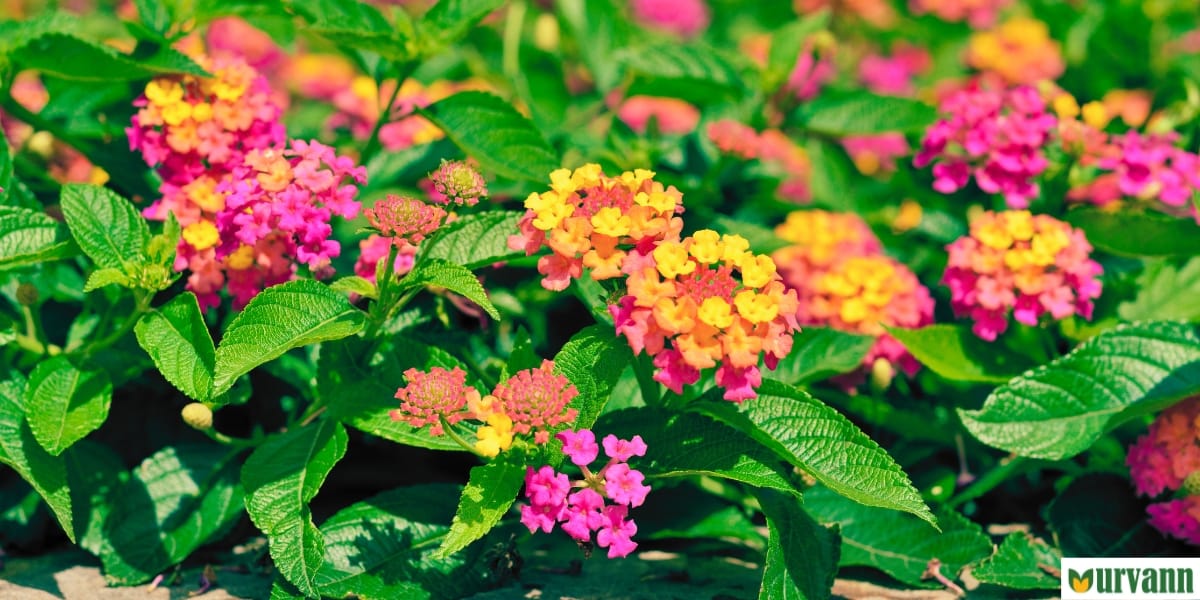Lantana plants, with their vibrant flowers and attractive foliage, are a popular choice for gardeners looking to add colour and beauty to their outdoor spaces. These versatile perennials are prized for their long-lasting blooms, drought tolerance, and ability to attract pollinators.
In this blog, we'll explore the characteristics, care, and benefits of growing lantana plants, as well as some tips for incorporating them into your garden.
Characteristics of Lantana Plants
Lantana, scientifically known as Lantana camara, is a genus of flowering plants in the verbena family, Verbenaceae.
- Native to tropical and subtropical regions of the Americas and Africa, lantanas are characterised by their clusters of small, brightly coloured flowers that bloom profusely from spring to fall.
- The flowers are typically arranged in dense, rounded clusters atop sturdy stems, and they come in a wide range of colours, including red, orange, yellow, pink, and purple.
- Lantana foliage is equally attractive, with dark green, aromatic leaves that provide a striking contrast to the colourful blooms.
.
Care and Maintenance
Lantana plants are relatively easy to grow and maintain, making them a favourite choice for gardeners of all skill levels. Here are some tips for caring for your lantana plants:
Sunlight
Lantanas thrive in full sun, so choose a planting location that receives at least 6-8 hours of direct sunlight per day.
Soil
Lantanas prefer well-draining soil with moderate fertility. Amend heavy clay or compacted soil with organic matter, such as compost or aged manure, to improve drainage and soil structure.
Watering
Once established, lantana plants are drought-tolerant and require minimal watering. Water deeply and infrequently, allowing the soil to dry out between waterings to prevent root rot.
Fertilising
Apply a balanced fertiliser formulated for flowering plants in spring and mid-summer to promote healthy growth and abundant blooms.
Pruning
Deadhead spent flowers regularly to encourage continuous blooming and prevent self-seeding. Prune lantana plants lightly in late winter or early spring to remove any dead or overgrown branches and promote a compact, bushy growth habit.
Pest and Disease Control
Lantanas are relatively pest and disease-resistant, but they may occasionally attract aphids, spider mites, and whiteflies. Monitor plants regularly for signs of infestation and treat promptly with insecticidal soap or horticultural oil as needed.
.
Benefits of Growing Lantana Plants
There are several benefits to growing lantana plants in your garden:
- Long-lasting Blooms
Lantanas produce clusters of colorful flowers from spring to fall, providing a continuous display of color throughout the growing season.
Attract Pollinators
Lantana flowers are rich in nectar and attract a variety of pollinators, including butterflies, bees, and hummingbirds, making them a valuable addition to pollinator gardens.
- Drought Tolerance
Lantanas are well-adapted to hot, dry conditions and are drought-tolerant once established, making them suitable for water-wise landscapes and low-maintenance gardens.
.
Incorporating Lantana Plants into Your Garden
Lantana plants can be incorporated into the garden in several ways:
- Borders and Edging
Plant lantanas along garden borders and edging to create a colourful and vibrant border that adds interest and definition to your landscape.
- Containers and Hanging Baskets
Grow lantanas in containers and hanging baskets on patios, balconies, and porches to add vertical interest and colour to outdoor living spaces.
- Mixed Borders
Plant lantanas alongside other sun-loving perennials and annuals in mixed borders and flower beds to create a dynamic and diverse planting scheme.
Pollinator Gardens
Include lantanas in pollinator gardens and butterfly habitats to attract and support beneficial pollinators and wildlife.
In conclusion, lantana plants are a colourful and versatile addition to any garden, providing long-lasting blooms, attracting pollinators, and requiring minimal maintenance. With their wide range of colours and easy-care nature, lantanas are sure to brighten up your garden and bring joy to gardeners of all skill levels. Whether planted in borders, containers, or mixed beds, lantanas add beauty and vibrancy to outdoor spaces and create a welcoming environment for pollinators and wildlife.


0 Comment